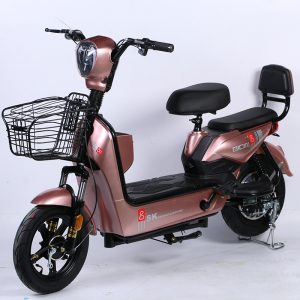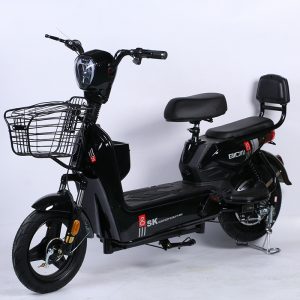For the brakes of general bicycles, the left side is the rear brake and the right side is the front brake.
Generally speaking: “For bicycle riding, the front brake is effective braking, and the rear brake is used to assist in speed control.” Bicycle manufacturers point out that many people know that when the vehicle speed exceeds 10 kilometers, the first brake will flick even in a straight line. When turning a corner, you can shake the car harder or even roll over. However, the front brake will not cause the tail flick. Even if the brake cannot be stopped, it will go straight. Therefore, it is recommended that the cyclist should consider the normal riding process and train the brakes. Use 70% front brakes and 30% rear brakes. To put it simply, “rear brakes are just an aid to help slow down.”
Learn to use the front brake
The strongest braking effect is produced at the moment when the brake is applied to the front brake and the rear wheel is about to lift. At this point, even the lightest rear brake can cause the rear wheels to slip.
If you are riding a traditional bicycle, the best way to learn to use the front brake is to practice on a safe open ground, brake both front and rear, and put the main force on the front brake. Keep pedaling so that your legs will tell you as soon as the rear wheels start to slip. Practice again and again, until something like this happens, you can find the feeling of a sudden stop, which is also on the verge of raising the rear wheel.
When to use the rear brake?
Experienced drivers only use the front brake almost 95% of the time, but there are some situations where the rear brake is more suitable:
1. Smooth ground. It is almost impossible to skid the front wheels on dry, high-quality ground, but it is very possible on smooth ground. When the front wheels are slipping, it is almost impossible to re-adjust and restore the car to a normal driving state, so it is best to use the rear brake to control the speed on the ground that may slip.
2. Bumpy road surface. On uneven roads, your wheels may become empty. If this is possible, do not use the front brake. If you use the front brake in the air, it will be a very bad thing to land after the wheels stop spinning.
3. The front wheel has a tyre. If the front wheel is punctured or out of air, you should use the rear brake alone to stop safely. Braking the wheel when the tire is flat will only cause the rim to roll off the tire, and it is easy to cause a crash.
















